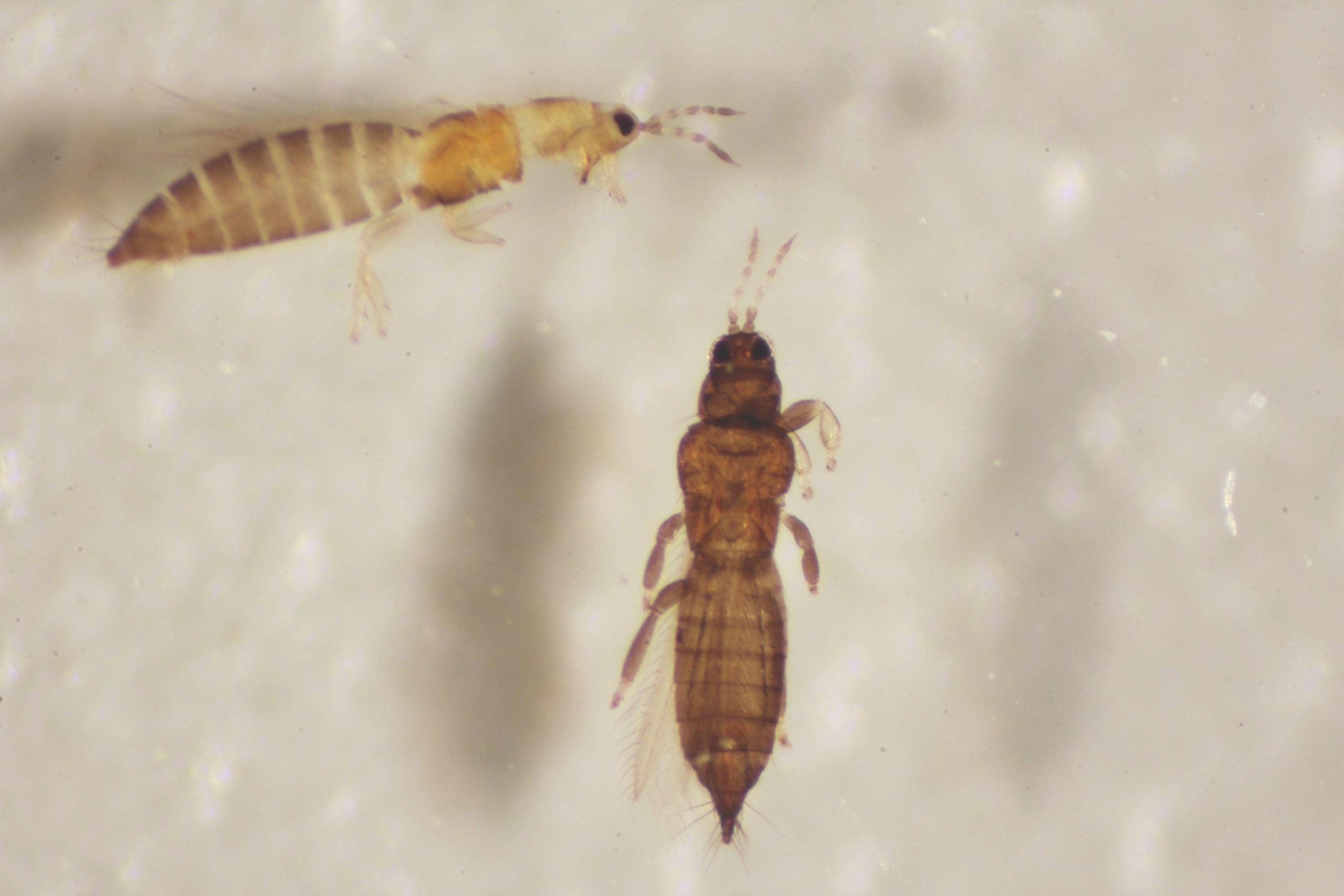48 Thysanoptera
Thysanoptera
The Thysanoptera (“thysan” = “fringe”), or thrips, are small insects ranging from ~0.5-14 mm, with most about 1 mm in length. Due to their small size, they are best preserved in ethanol or on microscope slides. The common name, thrips, is used as both a singular and a plural noun. In other words, you can see “a thrips”, or “many thrips”.
Thrips have asymmetrical, sucking mouthparts that they use to feed on plant fluids. Some species are wingless as adults, while others have very narrow, fringed wings. They are paurometabolous, but some have life stages that resemble prepupae and pupae. Some Australian gall-forming thrips have been shown to have haplodiploid sex determination (similar to that found in eusocial bees), and are social. They have even evolved a caste system, including soldiers.
Because thrips pierce plant cuticles to feed on fluids, they can be very important plant pests. In addition to the direct effects on plants (e.g. western flower thrips in greenhouse crops), they are key vectors of a number of plant viruses.




Feedback/Errata